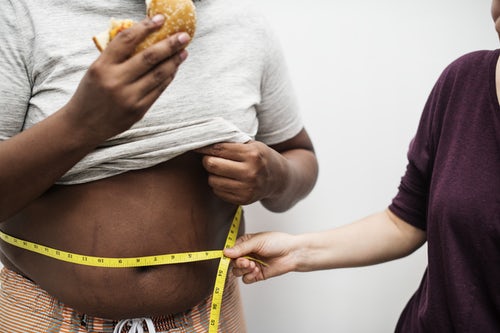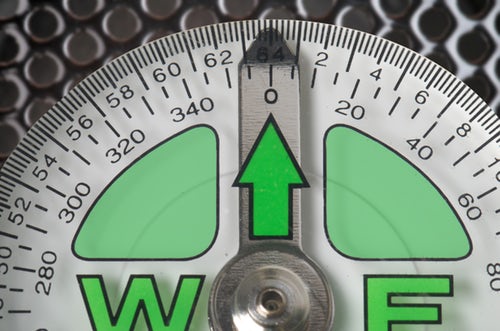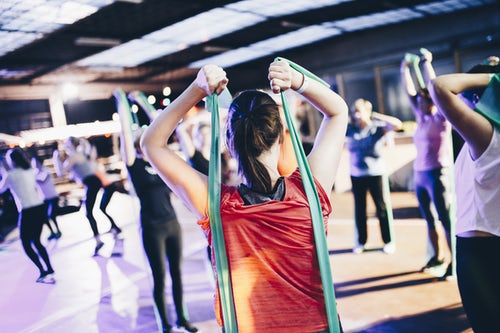My ninety-seven year old mother is decidedly opinionated about seriously overweight people.
“How can they let themselves get like that?” she laments while shaking her head and cruising along with her walker.
Sounds terribly judgmental, doesn’t it?
Yet scientists are proving there is an undercurrent of truth to that sentiment. A strong undercurrent.
Research indicates that the majority of the obese people in our country—40% of us fall into that category—didn’t get there by having bad or “fat genes.” On the contrary, evidently genes account for only 3% of the differences in people’s sizes.
Most overweight strugglers got that way for a variety of other reasons than genes:
- Learning how to and eating the wrong foods. (Family habits.)
- Learning how to and eating too much food. (Family habits.)
- Not exercising enough.
And now scientists know other variables play into the problem. Things like:
- Not enough sleep.
- Too much stress.
- Wrong kind of stress.
- Socioeconomic status.
- Mental health.
- Daily responsibilities at work and home.
- The health of your microbiome—your gut bacteria.
- Kitchen smarts and comfort—knowing how to cook and being comfortable preparing meals.
And I would add another variable:
Spiritual health.
So the verdict is in:
Experts agree that genes alone do not explain the rapid rise in obesity we’re seeing today.
National Institutes of Health (NIH) scientist, Kevin Hall, laments the fact that scientists still don’t know why weight loss can vary so much from person-to-person when they’re all on the same diet. He says it’s the biggest open question in the field.
What if you do have a “fat gene”?
It might seem easy to fall back on the knowledge of having a “fat gene” as a good excuse for not being able to lose and maintain a healthy weight. But John Mathers, a professor of human nutrition at Newcastle University in England sites a study of 9,000 people that found that being a fat gene carrier had no influence on that person’s ability to lose weight. Mathers says,
“Carrying the high-risk form of the gene makes you more likely to be a bit heavier, but it shouldn’t prevent you from losing weight”
(Sifferlin, Alexandra. “Why Your Diet Isn’t Working and What to do What It” The Science of Weight Loss: Special Time Edition, 2019; page 16).
What about that microbiome—the gut bacteria?
Researchers for the Personalized Nutrition Project at the Weizmann Institute of Science in Israel have been studying how gut bacteria may play a role in weight loss and maintenance. Their researchis fascinating.
In a nutshell, they found that blood sugar levels vary widely among people after they ate the exact same meal. That finding alone debunks the common and popular idea of everyone responding identically to the same diet recommendations.
And they were able to go further. They developed a mathematical algorithm for every person involved in the test trial, and that algorithm can accurately predict that person’s blood sugar response to a specific food just on the basis of their personal microbiome!
Knowing that could be the next frontier in weight loss prescription—your doctor being able to design a tailor-made diet plan, just for you and your body!
Another big contributor to weight gain and weight loss struggles are…
Chemicals.
Yup. Chemicals we’re exposed to in our daily lives. Chemicals like:
- BPA found in canned goods lining
- Cash-register receipts
- Flame retardant material in sofas and mattresses and children’s clothing
- Pesticide residue on our food
- Phthalates in plastics (think water bottles and food storage containers) and the makeup we wear
What’s wrong with these chemicals and how do they factor into obesity?
These chemicals are able to mimic human hormones. And that leads scientists to believe they can, and are, wreaking havoc on our endocrine systems. They’ve been found in human breast milk. And some doctors believe it’s what contributing to children experiencing puberty at younger ages.
Some doctors are going so far as placing this chemical-endocrine danger as the third lynch pin—along with poor diet and lack of exercise—in the trilogy of weight loss obstructers and obesity epidemic contributors.
Case Study—
I’d like to pin my current overweightness (not yet in the obese category) on a lot of things, including my slowing hormones. But when I take an honest look at my current lifestyle, it’s a far cry from what it was even two years ago, when I exercised regularly and paid closer attention to what I ate.
Although I’m eating healthier now than I did then, I’m eating more and burning off less. I had started sitting at my computer too much and stopped going to the gym regularly, all while continuing to consume the same number of calories I did when much more active.
I’d like to blame it on my slowing hormones, too, but first I’m ramping up my exercise again, before rushing off to my doctor for a thyroid test. I want to see if increasing my muscle mass will improve my metabolism to a point where the weight loss is regular and a healthy weight obtainable and manageable.
And because I’m getting older, I know my daily calorie requirements are dropping, so I need to take an honest look at what I’m packing in and when. And I’ve been accumulating sleep data, courtesy of the cool fit watch my younger son gave me for Christmas. From that I’ve determined I do best with 8 ½ hours of sleep. And, surprisingly, I seem to get more and better sleep when I go to bed later and rise a little later than an early bird.
Maybe that’s how my clock is wired, to be a night owl, even though I do on occasion enjoy waking up early enough to see the sunrise. Maybe not on a regular basis, though. So, I adjust to my personal biorhythms. Thankfully, I can do that since I’m self-employed. My poor husband—who definitely leans toward night owlness—doesn’t have that luxury.
Another thing that helps me immensely in getting adequate, restful sleep is shutting down all of the tech appliances well before bedtime. An hour is best, but I’m aiming for longer time between computer/phone/tablet and lights out. I find my sleep switch starts kicking in earlier and gradually ramps up the melatonin production in preparation for bed.
And one last thing I watch is how much food I eat for dinner and what time my last meal is. If my last meal is at 3-4 hours prior to bedtime, I sleep better. And if I consume my last glass of water 3 hours before going to bed, I’m less likely to be awakened by bladder pressure screaming its needs in the middle of a good dream!
As the long-living Seventh Day Adventists say, “Eat like a king at breakfast, a prince at lunch, and a pauper for dinner. It’s great advice!
NEXT WEEK, we’ll take a closer look at this Keto diet craze and the benefits of food restriction or fasting a couple of days a week.
Until then, take heart! You don’t have to be stuck in your unhealthy weight mode. Perseverance and consistency can get you where you want to be—healthy!
Blessings,
Andrea
“Certainly there was an Eden….We all long for it, and we are constantly glimpsing it.” —J.R.R. Tolkien


